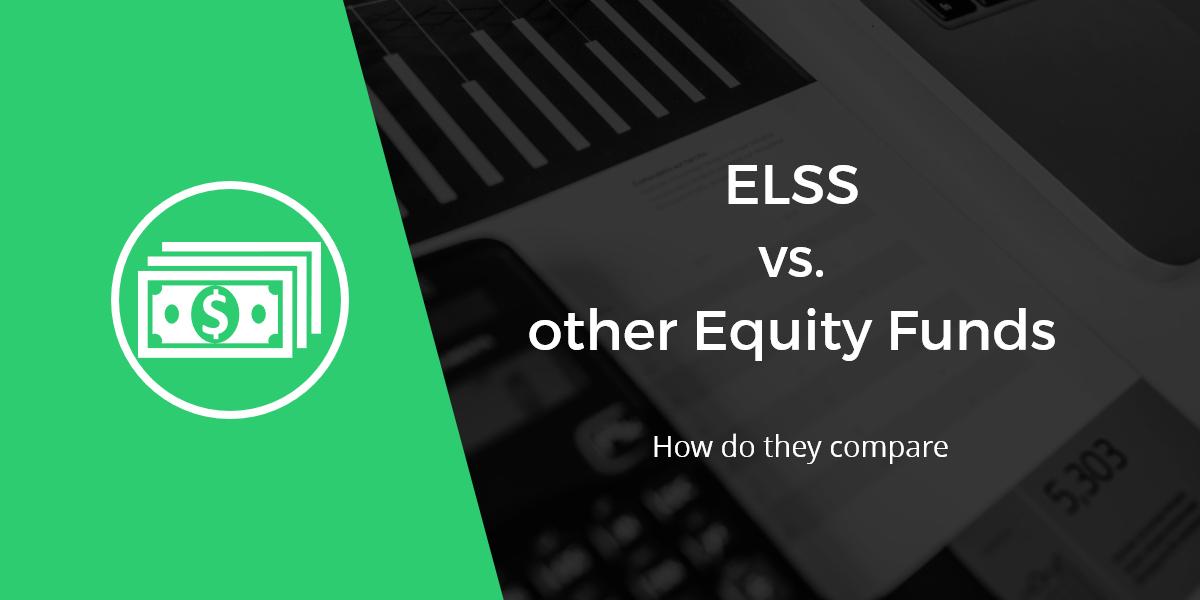How do ELSS funds compare with other equity funds?

So you are thinking of or you already invest in ELSS funds to save taxes. But have you ever paused to think how these funds fit in your overall portfolio? Sure ELSS funds are equity funds but what kind of equity funds? Are they like large-cap, mid and small cap or multi-cap funds? This has important implications for the risk that ELSS funds bring to your portfolio.
More importantly, are ELSS funds giving returns which are appropriate for the equity risk category they are in? For instance, if ELSS funds have performed better than similar non-tax saving equity funds, then this is a reason to invest in these funds even beyond the 80C limit of 1.5 lakhs. On the other hand, if ELSS funds perform worse, then investors should relook at investing in these funds, just to save taxes. We at Oro decided to look at the data and find out.
Our results show that as a category, ELSS funds should be thought of as multi-cap funds but with a stronger tilt toward large-cap equities that usual, non-ELSS multi-cap funds. Further, their category performance is pretty much in line with what you should expect given this classification. Individual ELSS funds can of course differ.
ELSS vs. other equity funds – comparison of benchmarks
The most straightforward way to find out how ELSS funds figure in the spectrum of large-cap, mid-cap, and small-cap funds is to look at their stated investment objective. This objective is summarised in the benchmark the fund chooses for itself.
So as a first step we looked at what percentage of ELSS funds are benchmarked to a certain equity index vs. what percentage of large-cap funds are benchmarked to that index. The data is in the chart below.
Indices are arranged from narrow indices such as Sensex and Nifty 50 which only have the largest companies to progressively broader indices which have more and more small companies. For large-cap funds, as expected, ~50% of funds are benchmarked to Nifty 50 and Sensex and then a decreasing percentage is benchmarked to broader indices Comparing this with ELSS funds, more % of ELSS funds are benchmarked to broader indices and less to Sensex/Nifty 50. So clearly ELSS funds as a group holds more shares of smaller companies compared to large-cap funds.
Based on this finding, we compared the benchmarks distribution of ELSS funds with multi-cap funds. Here the results are opposite. More ELSS (Multi-cap) funds are benchmarked to narrow (broad) indices.
This comparison of benchmarks leads us to conclude, that based on their own stated objectives, ELSS are like multi-cap funds with a stronger tilt towards holding large-cap stocks than the average non-ELSS mutual fund.
ELSS vs. other equity funds – comparison of returns
Having thus classified ELSS funds as multi-cap funds with a strong large-cap tilt, the next question that arises is whether ELSS funds have provided returns which are commensurate with this classification. The answer appears to be yes.
As we have discussed in another blog post, smaller-cap equities have a beta of > 1 to large-cap equities. What that means is that if large-cap equities move by a certain % say x, then smaller-cap equities move by more than x. This is true both when returns are positive and when they are negative. In the recent past, equities in India have gone up, therefore the performance of mid and small cap funds/indices have been better than that of large-cap funds/indices. Since multi-cap funds fall between the two there performance has also been between these two categories.
Read more: The different types of mutual funds in equities
Given our discussion about ELSS funds, we should expect their category returns to be higher than that of large-cap funds but lower than that of non-ELSS multi-cap funds since the latter has more small stocks. The table below shows that that has indeed been the case. Performance of ELSS funds over different historical time periods has been between that of large-cap and non-ELSS multi-cap funds like one should expect from the analysis of benchmarks.
Conclusion
Our analysis shows that ELSS funds can be thought of as multi-cap funds with a greater exposure to large-cap funds. Historical returns of the ELSS funds as a group (pre-tax) have also been in line with this classification – somewhere between large-cap and multi-cap funds.
Hence investors, who have limit left under Section 80C can definitely go ahead and want to invest in equity funds, should definitely go ahead and invest in ELSS.
However, if you have already exhausted your 1.5l limit, then there is no reason for investing in ELSS. Investors are better off investing in other equity funds where they can avoid the 3-year lock-in period. They can generate a similar kind of exposure as ELSS funds through a combination of large-cap and mid/multi-cap funds. These funds have a typical exit load period of 1-1.5 years and investors can enjoy long-term capital gains tax of 0 after 1 year of investment.
Other blogs in our ELSS series
Should you be investing in ELSS funds? Answer these 3 questions to know
Why save only Rs 45,000 when you invest in ELSS funds, Save Rs 51,000 instead!




No Comments